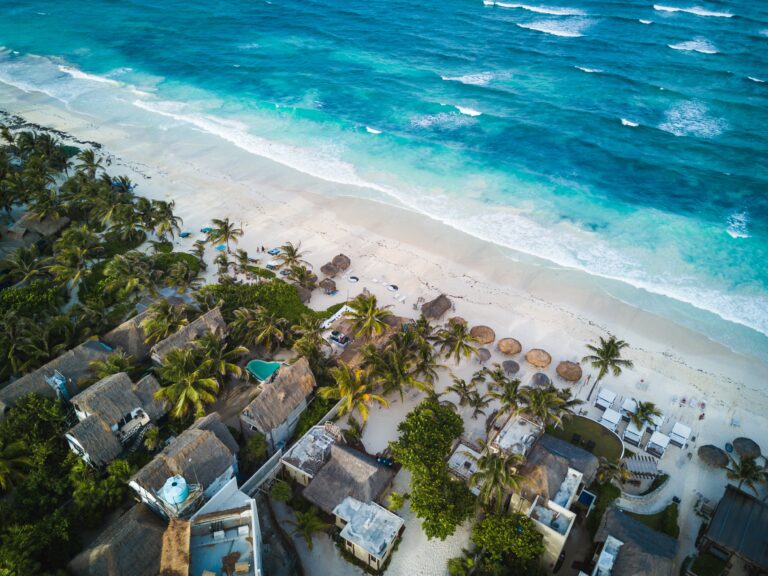Mexico is considered a safe country to visit but there are numerous dangerous areas and regions that tourists should avoid traveling to. Travelers should also follow general safety measures (listed below) on a daily basis while visiting Mexico.
Join our Travel Advice & Support FB Group
Which areas in Mexico are dangerous for tourists right now?
The US Department has recently warned citizens against traveling to Baja California, Tijuana, Colima, Guerrero, Michoacan, Sinaloa and Tamaulipas, due to increasing criminal activity. Americans and other foreign visitors, as well as local hospitality employees, have lost their lives in different attacks in the last few months.
Mexico Travel Warning Map
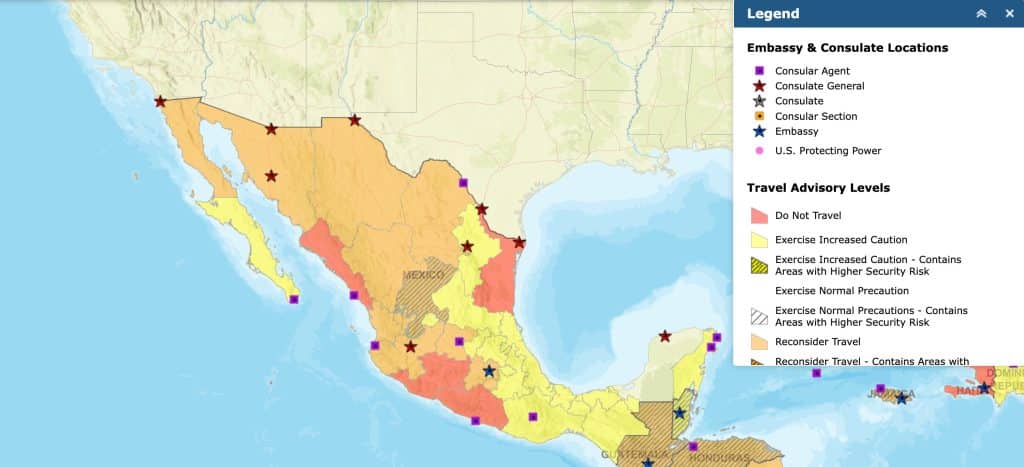
Recent Safety Updates:
May 3 – Travel Alert (Spring Break)
The U.S. State Department has issued a travel warning for the spring break.
The travel advisory for Mexico warns that crime, including violent crime, can occur anywhere in Mexico, including popular tourist destinations. Travelers are advised to be aware of their surroundings, avoid dangerous areas, and leave dangerous situations immediately.
Unregulated alcohol and counterfeit medication are common and pose significant health risk to visitors. Possession and use of drugs, including medical marijuana, is illegal and can result in lengthy prison sentences. The advisory also warns against sexual assault, as perpetrators target intoxicated or isolated individuals or use drugs to incapacitate victims.
March 20 – Texas urges all Americans against traveling to Mexico due to cartel violence
Weeks after the high-profile kidnapping of four Americans brought the country’s security crisis to the attention of the world, Mexican President Andrés Manuel López Obrador maintained on Monday that Mexico is a safer country than the United States.
“Mexico is safer than the United States. There is no issue with traveling safely through Mexico. That’s something the US citizens also know, just like our fellow Mexicans that live in the US,” he said during his daily morning press briefing.
However, for security reasons, Texas authorities have urged Americans against visiting Mexico over spring break.
Drug cartel violence, according to the Texas Department of Public Safety (DPS), poses a serious concern to anyone entering Mexico.
February 21 – Playa Del Carmen Increases Police Patrols From 20 to 300
Another important step in increasing visitor safety is the reinforcement of motorcycle patrols in Playa Del Carmen by local police authorities. There are now nearly 300 patrols a day, up from 20 previously.
The vast majority of crimes committed in Playa del Carmen are relatively minor, and those associated with the more significant organized crime networks in Mexico generally do not target tourists.
The increased police presence is often praised for giving visitors a sense of security and deterring criminal elements from targeting Playa del Carmen.
Important Safety Measures To Keep in Mind
- Inform your traveling companions and family back home of your travel plans. If you become separated from your tour group, transmit your GPS location to a friend. Take a photo of the taxi number and/or license plate and SMS it to a friend if you’re taking a taxi alone.
- When feasible, use toll highways and avoid driving alone or at night. Outside of the state capital or major cities, police presence and emergency services are extremely restricted in many states.
- When visiting local taverns, nightclubs, and casinos, use extra caution.
- Do not show signs of wealth, such as wearing expensive watches or jewelry.
- Be especially careful when visiting banks or ATMs.
- Sign up for the Smart Traveler Enrollment Program (STEP) to receive alerts and help rescuers find you.
- Follow the U.S. Department of State on Facebook and Twitter.
- Follow the U.S. Embassy on Facebook and Twitter,
- Read Mexico’s country security report.
- Create a contingency plan. Review the travel checklist.
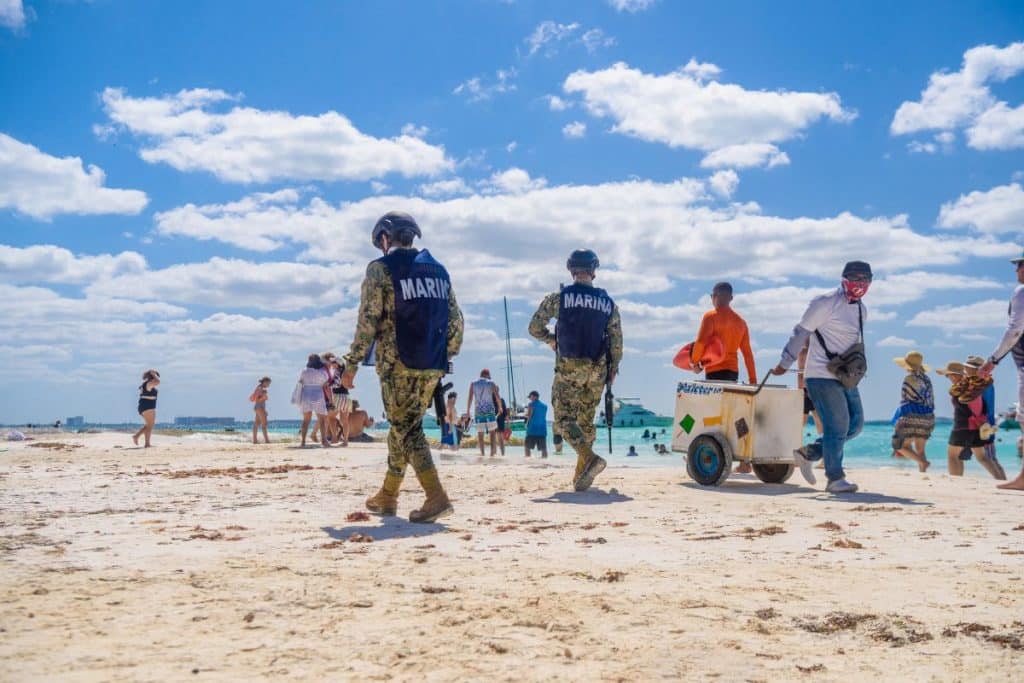
Most Common Tourist Traps / Scams in Mexico To Be Aware Of
Some of the most common scams in Mexico to look out for include:
Fake ATMs – Normally, you might not give the particular ATM you’re using any thought when you’re withdrawing cash. But because there are so many bogus ATMs in Mexico that steal your card information, you must take this into account.
Using reputable ATMs located in recognized banks is the best way to avoid this scam. It is very likely that a ATM on the street that seems suspicious is one.
Restaurant Scams – Scams in restaurants are another problem that visitors to Mexico frequently experience. This is a fairly simple trick wherein eateries give out the wrong change or overcharge customers. You may avoid falling for a restaurant scam if you only keep a watchful eye on your tab.
Bird Poop Swindle – The bird poop scam is a variation of all the other “sticky goop.” robberies Basically, you become covered in repulsive stuff like bird poop and a helpful passerby helps you wash it off. However, in reality, this person is robbing you of everything they can take from your pockets.
Move away from the person helping you immediately if you suspect this is happening.
Airport Taxi Upcharge – At airports, there are always a lot of people who want to take advantage of travelers. In Mexico, the airport cab upcharge is a common method.
In this scam, the driver charges an inflated price for transportation from the airport by pushing you into a large van or not using the taximeter. This happens frequently, especially in Mexico City. Always use authorized cabs in Mexico to avoid this.
Quintana Roo Safety App
Quintana Roo Tourist Board has developed the Guest Assist app for free download.
The app provides safety information, legal advice, a complaint line, and coronavirus information as well as access to a 24/7 bilingual call center for visitor assistance.
The app includes links and services for emergencies, extortion and kidnapping, robbery, lost or stolen passports, roadside assistance and even a way to file complaints for local tourism service providers.
“Ongoing security and protection strategy in place, and … is continuing communications with the State Police, alongside federal and local agencies and the private sector to maintain updated security measures to keep a safe and enjoyable environment for residents and visitors.” said the Director of the State Tourism Board.
The US State Department changes national warnings to specific states
While the State Department normally issues a Level 1 to 4 warning for each country in the world based on concern for the overall safety for travelers, the travel advisory for Mexico changed to specific states on May 2.
The change for Mexico warnings is a result of the State Department moving away from Covid-19 concerns, which is also the focus of warnings from the US Centers for Disease Control and Prevention (CDC).
“The Department of State’s goal is that U.S. citizens planning travel to Mexico focus on the particular area of Mexico to which they will be traveling,” they said.
FAQ
Not for the moment. Traveling to Tijuana and Rosarito, Baja California, poses a “serious risk,” according to US officials. Following the arrest of a key cartel boss, the US Embassy in Mexico has advised American tourists to avoid Tijana, Rosarito, and Baja California due to serious safety concerns.
Ensenada is generally a quiet and safe city. The risk of crime is low and travelers can feel safe here. Citizens have a high level of trust in the police.
Cancun is considered relatively safe to travel but due to multiple recent shootings between local gangs in the area, there are warnings about travel to the area.
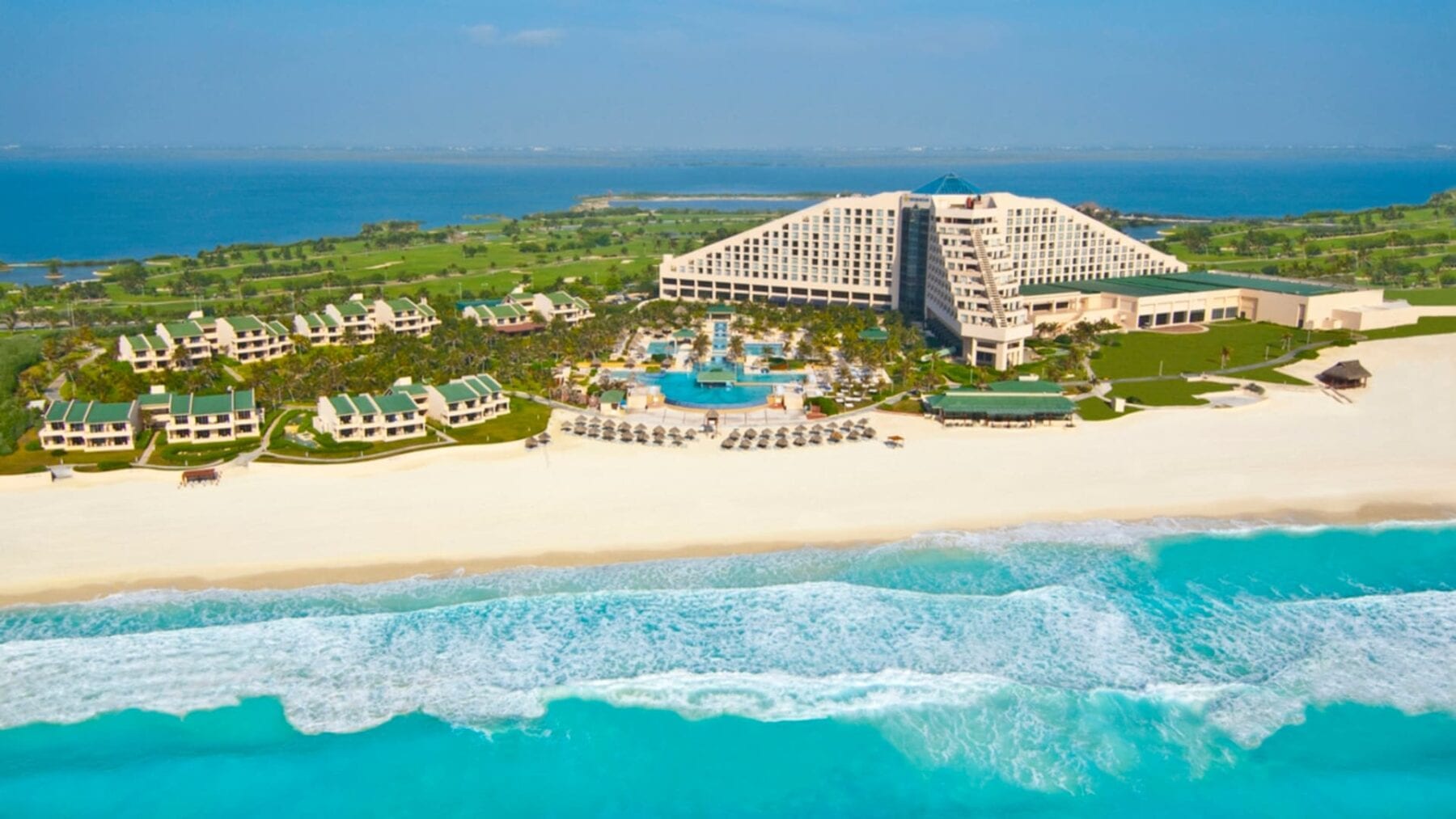
Best places to visit in Mexico
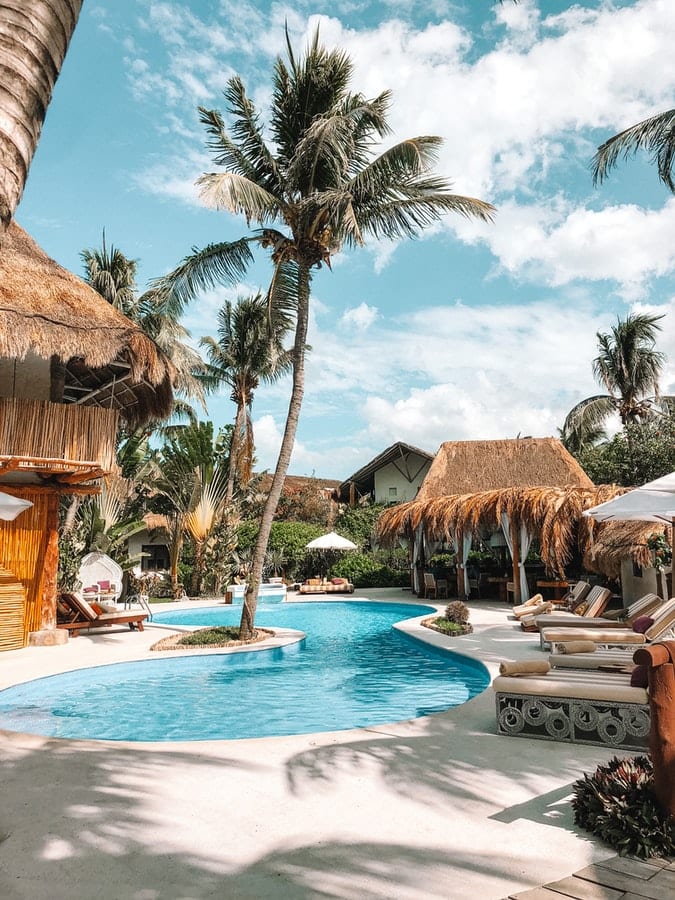
Whether you are interested in spending your vacation at the sunny beach, trying new watersports, or just enjoying the cultural experience, Mexico has something to offer to everyone.
However, before booking your trip, you must consider reviewing the Mexican States that have made it to the orange, yellow, and green epidemiology lists. Aim for the yellow, and Green although orange ones can offer you plenty of fun too.
Hotspots to visit this summer in Mexico
1. Cancun and the Mayan Riviera
Blessed with sugar-white beaches and countless high-end resorts, Cancun, Playa del Carmen, the island of Cozumel, and beyond compose a magnificent area along the eastern edge of the Yucatán Peninsula. It’s a must-see for international travelers.
2. Puerto Vallarta
Known as America’s social elite hotspot, Vallarta has become incredibly popular among expats looking for second homes in a sunny, warmer climate.
3. Cabo San Lucas
Featuring luxurious spas, golf courses, and beautiful beaches, Cabo San Lucas is one of the luxury hotspot destinations in Mexico. This does not mean that people traveling on a budget will not enjoy it. The city offers all types of activities from swimming to diving, snorkeling, and fishing.
Traveling in Mexico during Covid: Update Archives
February 6 – Playa Del Carmen Has Added More Security Cameras To Keep Tourists Safe
A new monitoring and control center is almost completed and Lili Campos, the region’s municipal president, announced last week that it will be fully operational by mid-February. Along with the construction of this center, security cameras will be installed at major landmarks in the city, including the famous Fifth Avenue, freeway approaches, bridges and other busy streets.
Although the area does not necessarily have a bad reputation for crime and mishaps, a number of arrests related to guns and drugs made headlines last year.
The Mexican Caribbean hotspot of Playa Del Carmen is the latest place to have extra security measures in place for the many tourists who vacation there each year.
January 23 – Los Cabos continue in the top 5 of the safest destinations in Mexico
The latest lists of Mexico’s safest cities were released by INEGI, the federal agency responsible for census and other data collection.
Los Cabos was once again ranked among the top 5 safest cities in the country. In fact, it slipped to fourth place in the new ranking, after previously being ranked as the third safest city in Mexico.
Curiously, this deterioration in the rating is not due to tourists feeling less protected in Los Cabos, but to the fact that Los Mochis, a city in Sinaloa, one of the Mexican states with the highest crime rate, has improved significantly in the ranking.
January 8 – Canada issues travel advisory and travel alert amid drug cartel violence
December 16 – Homicides decreased In Cancun according to the latest report
The number of intentional homicides decreased in Cancun in October, according to figures from the Semáforo Delictivo Nacional.
However, other crimes such as intentional assault, mostly with a firearm, increased compared to September.
Theft from vehicles increased by 12.24% in October, registering 17 more cases than in September.
The crime of extortion, in turn, recorded an increase of 166.67%, from 3 cases in September to 8 in October.
December 1 – Two beachside hotels catch fire in Cancun on an island without fire department
Over 100 tourists were relocated to other hotels when two beachfront hotels on the island of Holbox, Casa Tortuga and Posada Mawimbi, caught fire late Monday night.
The Holbox Hotel Association’s Alejandro Caedo urgently stated that the island is lacking numerous essential services, including a functioning fire brigade.
“Unfortunately, we are going to go out worldwide with bad news about the fires in Holbox and that we lack services on the island. Many people are going to ask themselves, well, I am going to go to an island, but what happens if there are no basic services, then that can affect us at the occupancy level”, he said.
“Let this remain as an experience to install a Fire Department on Holbox Island and in Tulum as well, added Celebrity Raúl Osorio Alonzo another hotel owner.
November 14 – Guardia Nacional boosts security patrols in the area of the Riviera Maya archaeological zone to protect tourists
As part of its commitment to safeguarding visitors, the Mexican government has disclosed fresh plans to deploy troops to some of the country’s most important Maya attractions. The move is part of a larger initiative to improve security, particularly in popular tourist areas, as millions of visitors flood the Mexican Caribbean in search of sun, sand and Mayan culture.
More soldiers will soon be deployed throughout multiple Maya ruins, according to a recent announcement by Mexican government officials. The decision is a component of both the Integral Strategy for the Protection of Cultural Heritage and the National Development Plan. The National Guard, a specialized paramilitary organization founded in 2019 to combat crime in the nation, will provide the majority of the deployed personnel.
October 31 – Cancun is not as dangerous as mass media and foreign governments say, – Hotel Association of Cancun
Jess Almaguer Salazar, President of the Hotel Association of Cancun, Puerto Morelos, and Isla Mujeres, one of the most significant and politically significant organizations in the city, expressed his disappointment at how the media exaggerates cases in response to the most recent unfair classification of Quintana Roo as a dangerous state for kidnappings.
As he himself noted, crimes do happen, including the incredibly unusual occurrence of an abduction, but they mostly occur outside of Cancun, away from the heavily patrolled municipal beaches and Hotel Zone. Salazar observes how media outlets “manage” breaking news as if it had an impact on popular tourism destinations.
In order to prevent scaremongering, Salazar concludes, news must be “contextualized.”
Read our full post: Cancun Is Not As Dangerous As Foreign Media And Governments Present, Officials Say
October 13 – Twenty people were murdered in Guerrero town
An armed attack killed 20 people Wednesday, including the mayor of a municipality in Guerrero’s notoriously dangerous Tierra Caliente region.
According to Guerrero police, 18 people were killed and two others wounded in an attack on the San Miguel Totolapan town hall on Wednesday. However, federal security director Ricardo Meja said Thursday that the death toll had risen to 20.
Armed members of Los Tequileros, a criminal organization allegedly linked to the New Generation Cartel of Jalisco, are suspected of perpetrating the slaughter in the small town. The town is located in a region where violence is endemic and drug traffickers wield enormous political power.
September 28 – Hurricane Ian is causing wreak havoc across the Caribbean but is still safe traveling to Mexico
Quintana Roo residents and tourists are being urged to take protective measures against Hurricane Ian’s ferocious rains and powerful wind gusts. The dangerous tropical storm has intensified to hurricane category 3.
Heavy winds and rain are affecting a number of Quintana Roo tourist hotspots, including Cancun and Playa del Carmen. Although, the hurricane won’t make landfall in these areas, tourists and locals should still look to local authorities for preventive safety measures.
September 7 – Los Cabos, ranked as the safest destination in Mexico
According to a recent official research, Los Cabos, Cabo San Lucas, and San Jose del Cabo are the safest destinations in Mexico.
San Lucas and San Jose are on track to become the new Cancun, with arrival numbers above 2019 levels and accounting for more than 8% of all air traffic in Mexico.
“The Capes” is very popular with Americans, as evidenced by the 22% increase in visits so far in 2022 compared to 2019.
The classification of Los Cabos, Cancun, and several other Mexican beach towns as Level 2 destinations only means visitors should proceed with caution.
August 23 – Undercover Police Officers Deployed To Tulum’s Hotel Zone
Quintana Roo authorities have sent undercover police officers to the Tulum Hotel Zone following an upsurge in violence in the area in recent weeks.
Oscar Montes de Oca Rosales, the attorney general of Quintana Roo, has indicated that the undercover police officers are intended to help restore peace in the city.
The decision to increase police presence in the Tulum hotel zone was made a week ago during a closed-door meeting between three levels of the state government and the armed forces.
On Aug. 12, four dead bodies were discovered in the hotel zone, prompting the actions. Five people were arrested as suspects in the murders.
August 11 – Tourists were traumatized after seeing a man shot in the face in Costa Mujeres
A man was tragically shot on a beach at the Riu Dunamar resort. Some tourists were shocked to witness such an event, but no one else was injured.
It is not known what caused the incident or why the shooting occurred. The identity or other specific information is also unknown. The horrific incident occurred on Costa Mujeres beach, a small piece of land with beautiful sandy beaches north of downtown Cancun.
“It was meant to be a holiday of a lifetime but it turned into absolute hell. I’ve now got a 14-year-old boy who is struggling to sleep because he’s still so terrified that it could’ve been him or us that got shot,” said Tracey Campbell one of the witnesses.
July 29: Shooting in Playa del Carmen
On Monday morning, a gunshot occurred on Fifth Avenue in Playa Del Carmen.
According to reports from the Solidaridad municipal police, the shots were fired between Calle 1 and Calle 14, on the famous Fifth Avenue. The first three people were reported injured but they are currently stable.
Following the report, the security authorities arrested seven Mexican individuals, and seized three firearms and 31 small bags of marijuana, according to the Secretary of Security of the municipality of Solidaridad, where the famous tourist center is located.
June/July – Safety update: Two Canadians found dead in Playa de Carmen
Some days ago, prosecutors and police said the remains of two Canadians were found in an apartment in the Mexican resort town of Playa del Carmen, with their necks slashed.
According to the prosecutor’s office, a security guard at the tourist apartment complex in the city center was also injured.
Investigators found an identification card of the male victim with three different names in the apartment where the remains were discovered. Authorities further stated that the person was wanted worldwide for fraud.
Investigators have not yet determined if the victims were long-term residents or visitors, although they are believed to have been in the area for several months.
March – Violence continues on the rise on Cancun resorts
Armed marines patrol Cancun’s beaches to safeguard local business owners, their establishments, and tourists from organized crime and rising violence.
Robert Almonte, a retired deputy chief of the El Paso Police Department and former U.S. marshal for the Western District of Texas who is an expert on Mexican drug cartels, said that tourist resorts in Cancun are currently a war zone.
“It is not safe to go to the resorts right now.”
Almonte does not believe that visitors would be targeted directly, but he is concerned that they may become collateral damage.
“The cartels are not very careful about how they kill,” he said. “They just go in and spray bullets and if an innocent person gets killed, that’s collateral damage and the cartels don’t lose sleep over that.”
February 2 – Current COVID-19 restrictions by state
Mexico has updated its epidemiological traffic light system.
Aguascalientes is now the only “red” state, which means that hotels can only accommodate visitors who are engaged in “critical activities.”
Baja California, Baja California Sur, Sonora, Chihuahua, Durango, Zacatecas, Coahuila, Quintana Roo and Nuevo Leon are now “orange,” Meaning that entering indoor venues will be restricted.
Sinaloa, Tamaulipas, San Luis Potosí, Jalisco, Guanajuato, Querétaro, Estado de México, Morelos, Yucatán and Mexico City are also “yellow,” meaning hotels, bars, and restaurants must operate at reduced capacity.
The rest of the states are “green,” so all activities are permitted.
January 15 – 3 Mexican hotspots to require vaccines or test to enter restaurants, bars, and clubs
As of yesterday, January 14, Jalisco restaurants, bars, clubs, concert halls, and other venues require their customers to provide proof of vaccination or negative COVID-19 test.
Two other Mexican regions followed the suit, including Tlaxcala and Baja California. However, in the State of Baja California, the proof of vaccination is rather a recommendation than a requirement.
For more information, check our full article on the topic here.
November 3 – U.S.-Mexican borders to reopen on November 8
19 months into the pandemic and the U.S. is finally reopening the border with Mexico for vaccinated tourists.
Non-citizen passengers should have their proof of vaccination ready. They should also be prepared to verbally state their reason for travel and vaccination status while boarding.
Vaccines approved by the CDC are Pfizer/BioNTech, Moderna, and Johnson & Johnson. Vaccines listed for Emergency Use (EUL) by the World Health Organization will also be accepted.
Unvaccinated visitors who travel for essential reasons will be allowed this time. However, starting in January 2022, all incoming passengers will have to be vaccinated.
Source: Fox29 News
December 9 – Mexico City administers first COVID-19 booster shots
On Tuesday, December 7, the first COVID-19 booster shots became available for residents aged 60 and over in Mexico City. They are AstraZeneca doses and are first administered to residents of the southern Tlalpan neighborhood.
To become eligible, patients must have completed their vaccination at least six months ago regardless of the vaccine makers.
Apart from the capital city, booster shots also rolled out in Jalisco, Chiapas, Oaxaca, Sinaloa, and Yucatán.
Source: Reuters, Mexico News Daily
September 16 – COVID-19 cases drop in Mexico
Last month, Mexico registered some of the highest numbers of daily COVID-19 incidence since the beginning of the pandemic. Luckily, its third wave seems to be easing.
In the past 7 days, there were 11,374 daily new cases, on average. Whereas the week before, it was around 13,200 new infections daily.
On the other hand, on September 15, there were 83,834 active cases reported in Mexico, a 1% decrease compared to Tuesday, September 14.
The same day, Deputy Health Minister Hugo López-Gatell said at a morning press conference that the third wave was on the wane in all 32 states.
He also mentioned that most current cases were mild thanks to the high vaccination rate.
Source: Mexico News Daily, Worldometers
September 1 – Mexico to begin vaccinating youngsters
On September 3, Mexico will start vaccinating the 18 to 29 age group in five of its municipalities.
In Cuautitlán Izcalli, Cuautitlán, Huixquilucan, Metepec, and Zinacantepec, youngsters will be able to get their first dose from September 3 to September 7.
Also, pregnant women will have a chance to get their jab after their first trimester in the above mentioned municipalities.
To prevent people from waiting in front of the vaccination centers, local government officials stressed out again that vaccines are free and that everyone will get the jab in the following weeks.
Source: Infobae
August 18 – Mexico to receive 8.5 million vaccines as COVID figures break record
The United States will send Mexico 8.5 million more doses of COVID-19 vaccines as the delta variant spreads like wildfire across all Mexican states.
U.S. Vice President Kamala Harris informed Mexican President Andrés Manuel López Obrador of the new vaccine batch on call Monday, said Foreign Affairs Secretary Marcelo Ebrard.
On Tuesday, Mexican Federal health authorities reported another 7,172 new Covid-19 as the third wave of the coronavirus gathers pace.
President Andrés Manuel López Obrador has come under fire for its lack of action to contain the virus.
Total accumulated cases now come to 3.108 million and deaths, 248,652.
Source: AP

